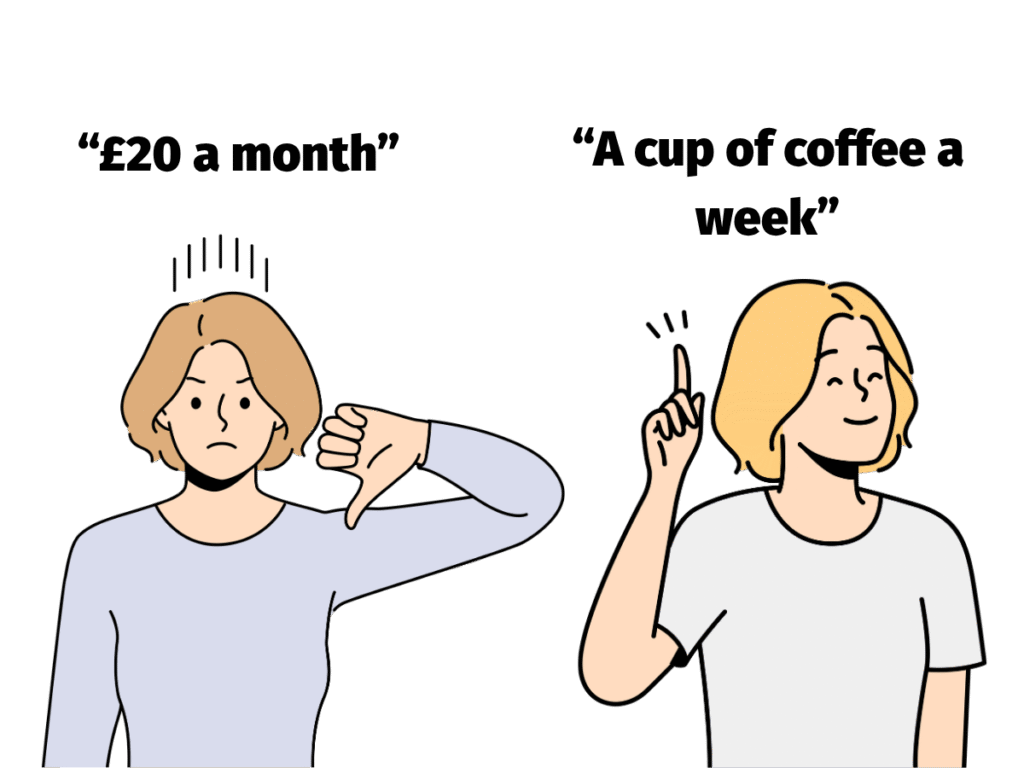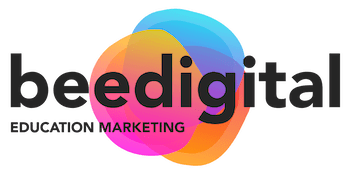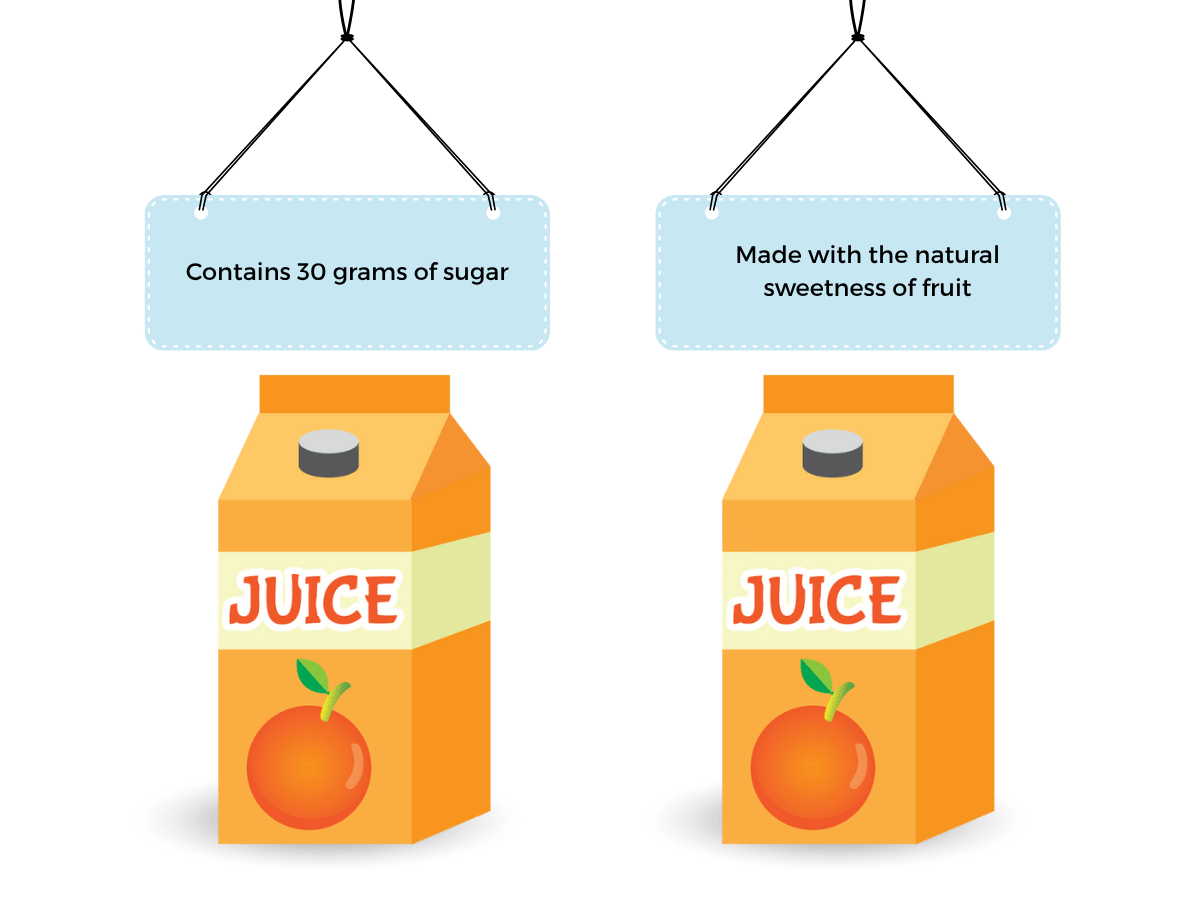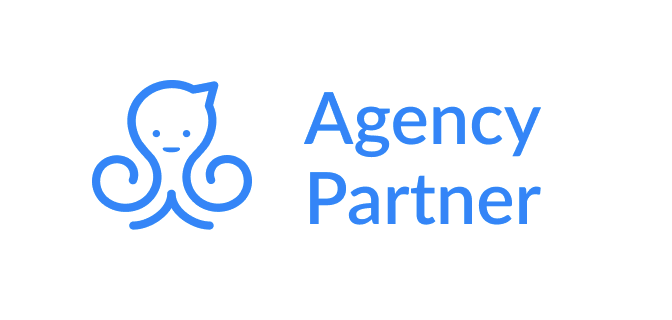If you work for an education company, here’s a few hard truths:
There’s a good chance you and your competitors are all positioning yourselves similarly.
But the market is crowded.
Teachers are tired of feature lists.
Your competitors can spin up blogs, ads, and brochures just as quickly as you using an AI platform.
Your advantage is no longer just what you say, or even where you say it.
It’s how you frame it.
The right framing makes your product sound like a lifeline. The wrong frame makes it sound like forgettable noise.
The framing effect is one of the most important psychological biases for marketers to understand.
Because the truth is people don’t make decisions based on data alone. They make them based on how that data is framed.
Why framing matters in marketing
Think about the world outside education for a second. Marketers use framing all the time. Take a bottle of juice.
❌ “Contains 30 grams of sugar” (sounds heavy, worrying, a red flag).
✅ “Made with the natural sweetness of fruit” (same sugar, softer frame).
Or with chocolate bars:
❌ “Over a quarter of your daily sugar in one serving.”
✅ “A fun-sized treat under 200 calories.”
It’s the same underlying fact. But one frame sounds positive, immediate, and desirable. The other? Flat and uninspiring.
We like to imagine our decisions are rational. But behavioural economics tells us they rarely are. Kahneman and Tversky, the psychologists who made this stuff famous with their prospecting theory, showed that people respond differently to the same information depending on how it’s phrased.
Marketers in every sector have learned to lean on this.
Education, for some reason, often hasn’t.
What happens in schools
Let’s bring it back to the classroom.
Leaders and teachers aren’t reading marketing copy with calm, reflective attention. They’re tired. They’re busy. They’re filtering out 99% of the noise that lands in their inbox.
And here’s the thing: they’re not rejecting your product because they don’t believe in its features. They’re potentially rejecting it because of the way it’s framed.
Consider these three versions of the same claim:
- “Save time.” (abstract, everyone says it)
- “Save 30 minutes a day.” (clearer, but still functional)
- “Leave school 30 minutes earlier.” (relatable, desirable, human)
Which one do you think makes a teacher stop scrolling?
The third one. Because it frames the benefit in terms of relief.
Where most edtech and education suppliers gets framing wrong

I often see three common mistakes:
Abstract claims
“Improve outcomes” or “boost efficiency” sound fine in a boardroom. But to a deputy head on their third Teams call of the morning, they’re meaningless.
Too technical framing
“AI-powered dashboard” or “cloud-based reporting tool” might impress a CTO, but they don’t connect emotionally with the people actually using your product.
Over-optimistic framing
“Revolutionise education” makes teachers roll their eyes. They’ve been promised that line a hundred times before.
Bad framing doesn’t just fall flat. It actively makes schools distrust you. Because it sounds like you don’t get what their day actually feels like.
Everyday examples you can steal from
Sometimes it helps to step outside the education bubble to see how framing works elsewhere.
- Health campaigns talk about “9 out of 10 people survive if caught early” instead of “1 out of 10 people die if left too late.”
- Charities ask for “the cost of a cup of coffee a week” instead of “£150 a year.”
- Tech companies sell “peace of mind” instead of “two-factor authentication.”
The trick is always the same: take the raw fact, and frame it in terms of the positive effect it brings.
How to frame your messages to appeal to school staff
Framing isn’t about spin. It’s about empathy.
You need to frame your product in a way that matches the lived reality of the audience you’re selling to. Here are some principles our team shares with clients when pulling together campaigns:
1. Anchor benefits in human stories
Instead of saying “reduce workload,” say:
- “A SENDCo who finally leaves school on time.”
- “A head of year who gets to their daughter’s football match.”
- “A deputy head who walks into governors’ meetings confident, not scrambling.”
2. Frame outcomes, not outputs
Outputs are features. Outcomes are what happens as a result.
- “Automated safeguarding alerts” (output) becomes “Catch issues early and sleep soundly at night” (outcome).
- “Customisable assessment dashboards” (output) becomes “Spot gaps before Ofsted does” (outcome).
3. Be honest about limits
Ironically, framing what you don’t do makes what you do more believable.
- “We’re not a silver bullet, but the 90 minutes a week we save you frees you up to do things you WANT to do.”
- “We won’t replace your MIS. We’ll finally make it useful.”
That kind of framing builds trust because it sounds grounded, not a PR machine.
4. Contextualise the value
Help leaders picture the impact.
- “Save 30 minutes a day” becomes “That’s 12 days a year you’re giving back to your staff.”
- “Improve attendance tracking” becomes “Spot patterns early before they cost you a full term.”
The difference is subtle. But it’s everything.
How to apply the framing effect in your own marketing to schools

On social media
Instead of:
❌ “Our new feature tracks interventions across multiple year groups.”
Try:
✅ “Still pulling intervention data from three systems on a Sunday night? We fix that.”
Why it works: The second frames the feature around a pain point teachers instantly recognise.
On landing pages
Instead of:
❌ “Cloud-based platform with advanced reporting features.”
Try:
✅ “Walk into your governors’ meeting confident, with evidence at your fingertips.”
Why it works: The first is an output. The second is the outcome leaders actually care about.
On email subject lines
Instead of:
❌ “Save time on data entry.”
Try:
✅ “Leave school 30 minutes earlier this week.”
Why it works: The second is personal, vivid, and easy to imagine.
On sales presentations
Instead of:
❌ “End-to-end solution for tracking student progress.”
Try:
✅ “A clear picture of progress, without chasing five different systems.”
Why it works: Teachers don’t fall in love with dashboards. They fall in love with the relief of not wasting time scratching data from different sources.
Framing is the lens through which teachers see your product
So ask yourself: right now, are you framing your product as just another product and feature list…
…or as the relief that teachers have been waiting for?
PS:
I recognise there’s an ethical dimension here too. Is framing underhand? I’d argue it depends on intent. Sugary drink makers use framing to downplay sugar content is a tactic that could mislead people into thinking a product is healthier than it is. That’s manipulative.
But in education, the responsibility is different. Framing isn’t about hiding the truth; it’s about clarifying it in language that resonates with the people living the problem.
If your tool really does save teachers time, it’s not dishonest to frame that in terms of “leaving school earlier”, it’s making the benefit real and human.












